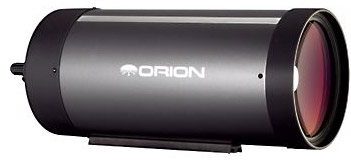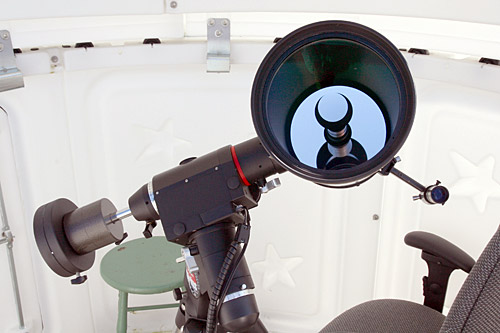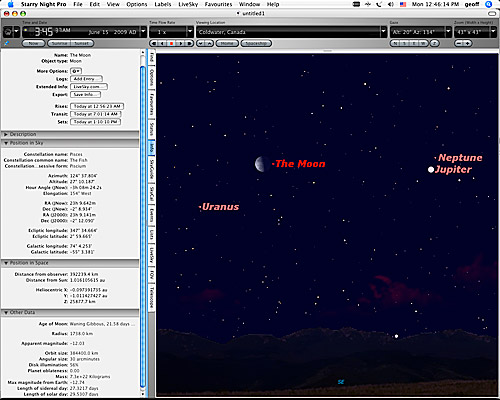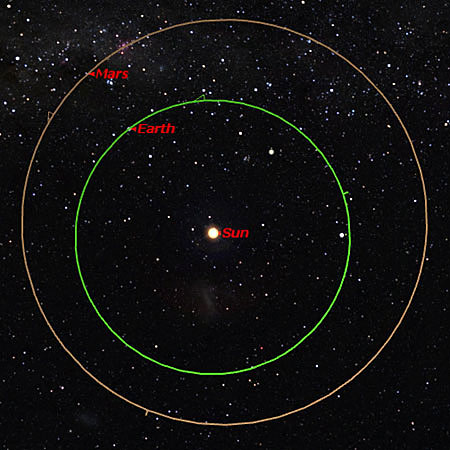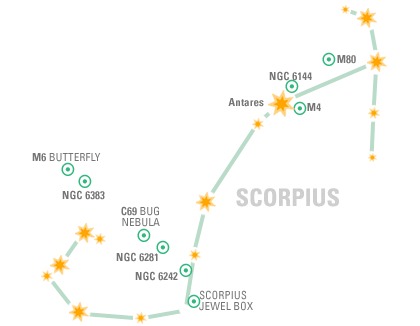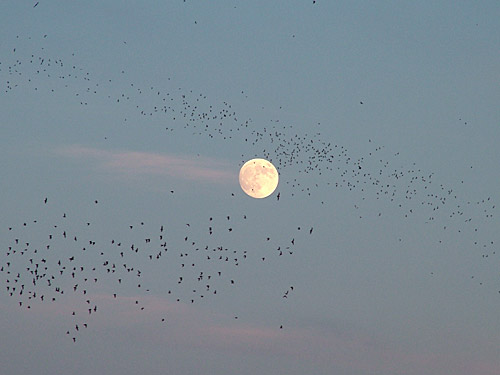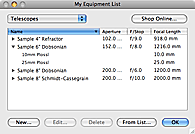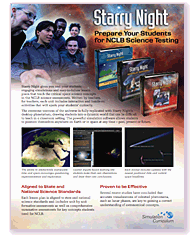 |
|||||||||||||||||||||||||||||||||||||||||||||||||||||||||||||||||||||||||||||||||||||||||||||||||||||
|
If you have trouble viewing this newsletter, click here. Welcome again to our monthly educational newsletter with features on exciting celestial events, product reviews, tips & tricks, and a monthly sky calendar. We hope you enjoy it!
I’ve always had a soft spot for Maksutovs. When I was a teenager, I dreamed about the exquisite Questar, far beyond my budget. In 1997, I bought a much more affordable Meade ETX90, which proved to have outstanding optics. A few years later, I acquired an Orion Argonaut 6-inch Maksutov-Newtonian, which is one of the finest telescopes I have ever used, and one I will never part with. In 2001, Orion introduced a series of small Maksutov-Cassegrain telescopes: 90mm. 102mm and 127mm apertures. These were well designed, precision made, and excellent optically. Unlike some other brands, they were entirely made of metal except for the lenses and the rubber grip on the focusing knob. They were marketed under the StarMax brand for astronomical use and the Apex brand as terrestrial spotting scopes. One of their most striking features was a beautifully machined 1.25” visual back, threaded for camera T-adapters and perhaps something else. This resembled the visual back on Schmidt-Cassegrains, but had a different thread size. I was one of the early purchasers of the 127mm version, and I used this scope extensively, especially for solar, lunar, and planetary observing. In particular, I used it to observe transits of the planets Mercury and Venus across the face of the Sun.
Once again, quality is everywhere in evidence. The lens cells are massive. The coatings on the primary and the corrector are immaculate. The focuser moves the mirror positively with almost no image shift. I could hardly wait to get the scope out under the stars and, as luck would have it, the skies were clear on the night I received the scope.
This scope is rather more specialized than most amateur telescopes. Its long focal ratio (f/15) and focal length (2700 mm) are reminiscent of the giant refractors of yesteryear. This makes it primarily a solar system scope. Because of the long focal length, high magnifications are readily achieved with relatively long focal length eyepieces: the shortest I used was an Tele Vue 11 mm Nagler (245x). The down side of this is that it’s difficult to achieve low magnification and impossible to get a wide field of view. For example an Orion 24 mm Stratus eyepiece with an apparent 68° field of view yields a magnification of 112x and an actual 36 arcminute field of view, just barely large enough to encompass the Moon. Since the visual back accepts only 1.25 inch eyepieces, longer focal lengths give lower magnifications, but with no increase in apparent field of view. On my first night out, I spent most of my time resolving issues with the Orion Sirius mount the scope was riding on. I did manage some fine views of the Moon at 245x, including spotting two of the craterlets on the floor of the crater Plato, a standard test for low contrast detail. I saw the domes west of Copernicus and the rille in Hypalus B. Turning to Saturn, again at 245x, the almost edge-on rings were like shaded gossamer, and their shadow formed a thin line across the planet’s equator. The seeing (atmospheric steadiness) was not as good on my second night, and there was a full Moon low in the southeastern sky. The five brightest moons of Saturn were readily visible, all but Iapetus forming a straight line. I tried some doubles like Iota Cancri, Algieba, and 54 Leonis, but was unable to split the close pairs of Epsilon Lyrae, largely because of its low altitude and the poor seeing. Despite the Moon, I was able to get good views at 112x of M44 (the Beehive Cluster), M67, and M57 (the Ring Nebula). At the end of the night, I used the “Park Scope” command to retain the mount’s alignment. This allowed me to wake it up in two mornings later and have it immediately point at Venus, placing the planet well within the 24mm Stratus eyepiece’s 36 arcminute field of view — very impressive! On the night of May 14/15, I made a remarkable observation with this scope, a lifetime first for me. I was able to detect at 245x the transit of the shadow of Saturn’s moon Titan onto the planet. Such transits occur only for a brief period every 15 years when Saturn’s equatorial plane is aligned with the Earth. Although I’ve observed the shadows of moons many times on Jupiter, this was the first time I had ever seen the shadow of one of Saturn’s moons. It appeared as a notch in the limb of the planet as it moved onto the disk. Unfortunately, Saturn was sinking rapidly towards my western horizon, and the seeing was deteriorating rapidly, causing the shadow to smear into nothingness. A few nights later, with the Moon out of the way, I was able to spend some time looking at deep sky objects. Although this scope’s rather narrow field of view prevents the wide vistas of the largest deep sky objects, it does very well on smaller objects because of its high contrast image. I found myself most using the Orion Stratus 24mm eyepiece (112x) and occasionally shifting up to the Nagler 11mm (245x) to tease out fine detail. The image was surprisingly bright even at 245x. This telescope does particularly well with globular clusters such as M5 in Serpens Caput, and M13 and M92 in Hercules. The Ring Nebula, M57 in Lyra, was a fine sight. The many galaxies of springtime showed up well, such as M65, 66, 95, 96 and 105 in Leo and M49, 64, 87, 89, 98, 99, 100, and 104 in Virgo. I was easily able to see the galaxy M91 in Virgo, probably the most difficult of all the Messier objects. I also tried to split Epsilon Lyrae a second time, and this time succeeded thanks to better seeing. My final acid test for this telescope was the planet Jupiter. This required getting up early in the morning. I used a pair of Orion Sirius 25mm Plössl eyepieces in my Tele Vue binoviewer with built-in 2x Powermate, yielding 216x. This was my first look at Jupiter of the season and, as I usually find, at first I could see hardly any detail. After a few minutes my “planetary vision” began to kick in, and more and more fine detail was visible. Towards the end of the session, as dawn began to light the sky, I could see the Red Spot Hollow rotating into view; the Red Spot itself was too faint to be visible as a color contrast. I had quick looks at the Moon, Venus, and finally Mars, still an incredibly tiny boiling disk far from the Earth. In summary, I found that the Orion 180mm Maksutov, like any good telescope, simply got out of the way and let me observe a variety of objects with ease. While it seemed to lack some of the contrast of its smaller brethren, it made up for this with its large aperture, pulling in the detail when required. Because of its narrow field of view, it is not a general purpose telescope for everyone, but its huge image scale makes it a pleasure to use at high magnifications. I suspect it would also be a fine instrument for imaging the Moon and planets. Geoff Gaherty
One of the most useful features in Starry Night is the Info Pane. This can be accessed in several ways:
This brings up a wealth of information on the selected object. Here are some of the things I find particularly useful:
The Info pane gives a whole lot more information, serving as a built-in reference handbook of astronomical data. Teachers will find it a wonderful resource for many exercises regarding the physical properties of astronomical objects. Explore! Geoff Gaherty
Earth's orbit takes it around the Sun once every 365 days (which, of course, is the definition of a year). Mars is farther away from the Sun, which means its orbital path is longer and it travels along it more slowly. It orbits the Sun once every 687 days. That's a bit less than two Earth years, so each time Earth goes around the Sun once, Mars has gone around a bit more than half of its orbit. This also means that every so often – specifically, every 26 months – Mars and Earth are lined up with the Sun, like this:
This configuration is called an opposition of Mars. (Oppositions happen periodically with any planet that is farther from the Sun than Earth is.) You can see that because the two orbits are not perfectly circular, there are some places where the paths are close together and others where they're far apart. In August of 2003, Mars was at opposition and very close to perihelion (its orbit's closest point to the Sun). Because Mars was closer to the Earth in August of 2003 than it was during either of the previous oppositions (in June of 2001 and April of 1999) it looked bigger. Below are the dates of the three oppositions, with corresponding views of Mars at the same magnification, and orbit diagrams showing the relative positions of Mars and Earth:
Now that you've read about how oppositions work, remember that email that someone forwarded to you, describing how Mars will look as big as the full Moon this coming August? Guess where that came from! Someone wrote that in early 2003, before that really good perihelion opposition. Unfortunately they didn't mention the year, so everyone who sees that email for the first time thinks it refers to this year, and passes it on. But oppositions don't happen every August, and certainly oppositions that spectacular don't happen every time we swing by Mars. Secondly, it was completely wrong about how big Mars would look during a perihelion opposition. During the 2003 opposition, its angular width in the sky was about 24 arcseconds. The Moon's angular width is around half a degree, or 1800 arcseconds — about 80 times the angular width of Mars at perihelion opposition. These emails usually get the distance completely wrong too — Mars was about 55 million kilometers away during the 2003 opposition. Drag out your Pythagorean theorem and prove it for yourself, or consult an astronomer who was looking at it — or pop the following .snf files into your Starry Night to watch how Mars orbits and how its size changes over time when seen from Earth. Brenda Shaw
The Far Side of The Moon Open the file and press the Run Time Forward button to slowly rotate the Moon so as to see all sides of it. When the side opposite the Earth comes around the Earth will appear behind the Moon. This rotation emphasizes just how different the far side of the Moon is from the side facing the Earth, usually quite a surprise for students! Pedro Braganca
For those of us in mid-northern latitudes, it's probably best to start low; the underbelly of Scorpius skirts the southern horizon, making observation tricky. The Scorpius Jewel Box is actually two open clusters in close proximity: the top one loose, and the lower one tight. A great binocular target. NGC 6242 is an open cluster, and NGC 6281 is an open cluster with nebulosity. C69 or "The Bug Nebula" (aka NGC 6302) is an interesting planetary which looks, at first glance, like a galaxy. The western side of the nebula has a prominent lobe with a tapered end while the eastern side is noticeably blunt. NGC 6383 is a dim, wide cluster with nebulosity. M6 is a bright and obvious open cluster which makes for an easy binocular target. Telescopes show rich detail and M6 is seen to be aptly named, "The Butterfly Cluster". Three globular clusters sit close to Antares. M4 and M80 are well known, but a challenge is NGC 6144 because it sits so close to the 1st Mag red supergiant. Antares itself is 600 lightyears away and glows with a luminosity 12,000 times greater than our own sun. This area rewards binocular users generously. There are seemingly endless textures, patterns, star clusters and odd little clouds, all of which are well within the grasp of even basic optical aids. Sean O'Dwyer
An unusual picture of the Moon taken at Carlsbad Caverns NM, USA shortly after sunset during the 'Flight of the Bats'. Single frame using Fuji FinePix S7000 camera at 6 megapixels.
RULES: We would like to invite all Starry Night Education users to send their quality astronomy photographs to be considered for use in our monthly newsletter. Please read the following guidelines and see the submission e-mail address below.
|
JULY 2009
|
||||||||||||||||||||||||||||||||||||||||||||||||||||||||||||||||||||||||||||||||||||||||||||||||||||
 |
|||||||||||||||||||||||||||||||||||||||||||||||||||||||||||||||||||||||||||||||||||||||||||||||||||||
|
|
|||||||||||||||||||||||||||||||||||||||||||||||||||||||||||||||||||||||||||||||||||||||||||||||||||||
You have received this e-mail as a user of Starry Night or as a registrant at starrynighteducation.com
To unsubscribe, click here.
